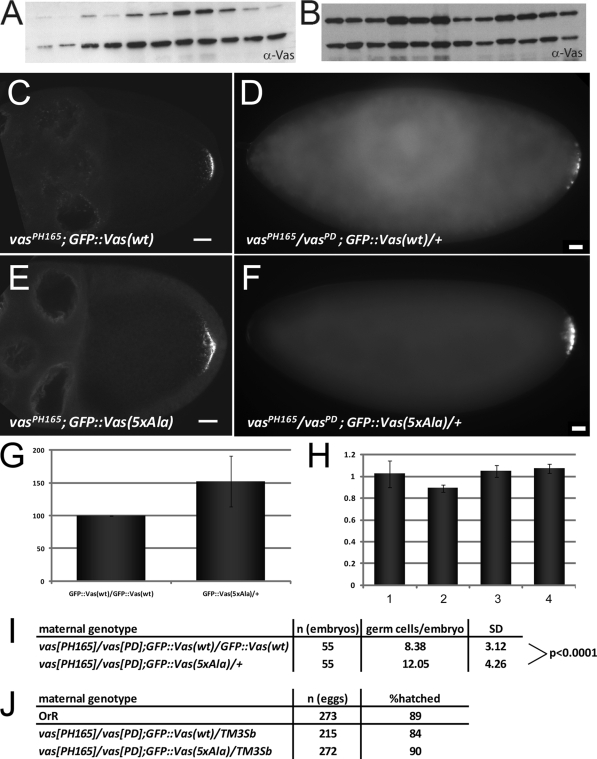FIG. 5.
GFP::Vas lacking the DINNN motif accumulates to high levels, localizes normally, and rescues vas phenotypes. (A and B) Western blots of ovarian extracts showing expression levels of individually established lines for GFP::Vas(wt) (A) and GFP::Vas(5xAla) (B) transgenes (upper band) and endogenous Vas (lower band). (C to F) Wild-type GFP::Vas (C) and a mutant form lacking the DINNN motif (E) localize similarly during oogenesis. Both transgenic proteins rescue PGC formation in vas mutant embryos. Bars, 20 mm. (G and H) GFP::Vas(5xAla) accumulates to higher levels than GFP::Vas(wt). (G) Normalized expression levels of the mutant protein in comparison to wild type. (H) RNA expression levels assayed by qRT-PCR. Bars 1 and 2 represent two independently prepared samples of vasPH165/vasPD; GFP::Vas(wt)/GFP::Vas(wt). Bars 3 and 4 represent two independent samples of vasPH165/vasPD; GFP::Vas(5xAla)/+. One copy of the mutant transgene expresses an RNA amount comparable to two copies of the wild-type transgene. (I) One copy of the GFP::Vas(5xAla) transgene permits the formation of more PGCs in vasPH165/vasPD embryos than two copies of GFP::Vas(wt). (J) Both constructs rescue the ability of vas embryos to hatch.

